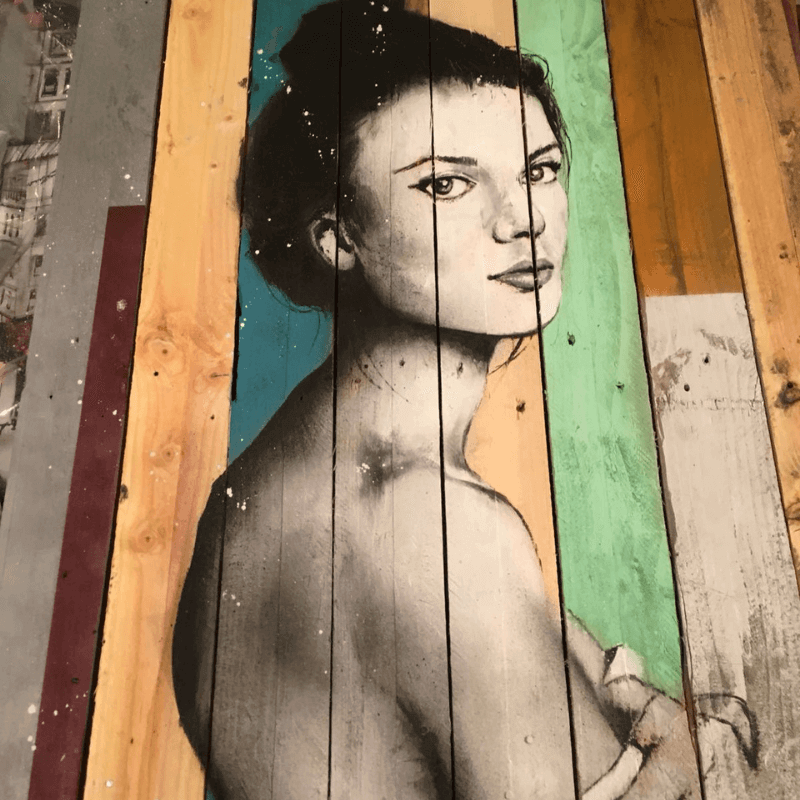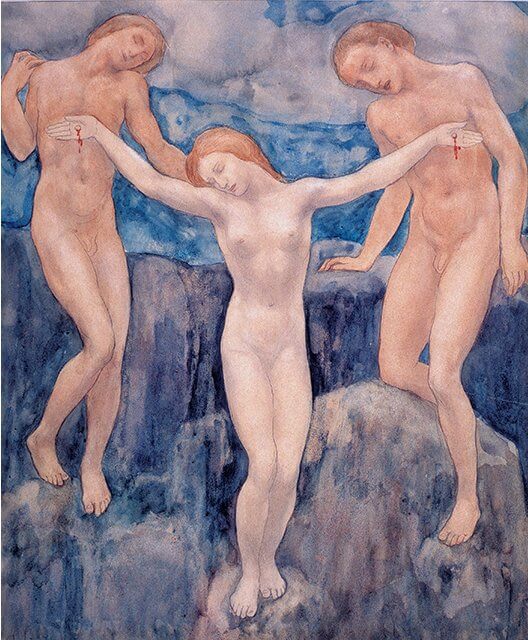Discover nude art in all its form
expressions during history
Nude art in the Ancient societies
Male and female nude sculptures had different meanings in the Ancient traditions. Naked women were the symbols of well-being, procreation and fertility as we can see it through Egyptian, Mesopotamian and Greek arts. Very early prehistoric sculptures reveal naked female deities who represent fertility or love. Ishtar, naked goddess of love and war in the Mesopotamian tradition, is a good exemple.
Whereas female nude sculptures represent fertility, naked male sculptures were associated with very high moral values and strength. For athletic events in Ancient Greece, nude competitions were held by men. Also, during symposia (kind of big parties with drinking, music, dancing, conversation and recitals), they disrobed. Ancient Greek sculptors, then, naturally associate naked male with triumph, glory and power. Statues of nude boys called Kouros were especially symbols of physical beauty, youth and moral beauty.
Nevertheless, in the Mesopotamian and Ancient Egyptian traditions, being naked is usually connected to disgrace and low status. Anyone with high social status would be embarrassed to be naked in social situations.

Discover nude art in the Middle Age and during Renaissance
Middle Age
With the arrival of the christianity and its emphasis on chastity, nude sculptures all but disappeared from the Western art.
Depictions of naked bodies were discouraged. That's why completely nude bodies are rare in medieval art except for Adam and Eve. Masolino's The Original Sin (1424) and Mosaccio's Adam and Eve driven out of Eden (1425) are the most known frescoes related to this. Adam and Eve's exceptional depictions of nakedness revealed their sin. Jesus' nakedness can also be seen in many scenes. In his case, the naked body revealed wounds. Nakedness wasn't no longer the symbol of strength or fertility. Rather, it was associated with defenselessness and weakness. Jesus naked body was especially exposed for theological reasons, just as "Nursing Madonna" or Madonna del Latte in Italian.
Renaissance : nude art revival
From the Renaissance era onwards, interest in naked bodies was being rekindled after hundreds of years. But now, nude paintings were solely valued for their sensual and aesthetic aspects. Naked bodies gradually lost their iconographic character. Nude itself became a source of inspiration for artists after the renewed interest in plastic beauty and after the rediscovery of Antiquity. Proportions were now respected in the paintings and live models were used to draw them. Realistic musculature was even added. Renaissance sculptors had a preference for male models. Leonardo da Vinci’s Vitruvian Man (1490) and Michelangelo's works are good examples. Boticelli, in 1485, also painted a female naked body. He was the first artist to paint a female nude for no religious reason. The painting called The Birth of Venus and measuring 172.5 by 278.5 centimetres represents Venus who beautifully reveals her body. Andrea Mantegna (1431–1506), a passionate fan of the ancient classical world, also played a major role in the resurgence of nude art during the Renaissance.
Nudes in Asia paintings - Japanese modernism
For centuries, nudes have been absent from japanese art even though nakedness was part of routine in the japanese society, as in their mixed communal bathing tradition. Nevertheless, their sculptors didn't have a huge interest in painting the naked body. But from the nineteenth century, Japanese artists became influenced by Western art. They were authorised by Japan Laws to draw nudes if the meaning was allegorical. Japanese artists bypassed those laws. For example, Tetsugoro Yorozu drew a woman wearing a red traditional Japanese female underwear called koshimaki. The painting was entitled Nude Beauty (1912). Hashiguchi Goyô also made a famous work called Yuami in 1915.
Nude art is also seen in India and in Arab world :
Kandariya Mahadev Temple in Khajuraho
Pain, Khalil Gibran in 1923

2.jpg)
Nude in contemporary art : who are the major figures ?
Among painters whose works are notable, Tom Wesselman is a major figure. He is an American artist of the Pop Art movement who used found objects and images cut from magazines to create female nudes. His depersonalized works are very emblematic of the 1960s and were known to be erotic icons.
In the 1970s, a small group of painters, "The School of London", arised. Francis Bacon and Lucian Freud were part of this group. Lucian Freud's figurative works became icons in the contemporary era. He chose to depict the human naked body without idealization rather than conventional nudes. One of his works entitled Naked Portrait shows a realistic image of an unclothed woman. Benefits Supervisor Sleeping (1995) is also one of his oil on canvas paintings that depicted an obese woman lying on the couch. Freud stated that he painted people how they happen to be, not because of what they may look like.
Hildegarde Handsaeme's works are colorful and can be translated as authentic odes to women. He painted generous shapes and poetic bodies. She showed, through her epic work, that the nude art is very elusive and has no boundaries.















